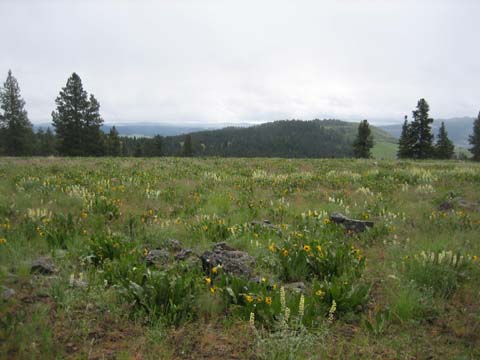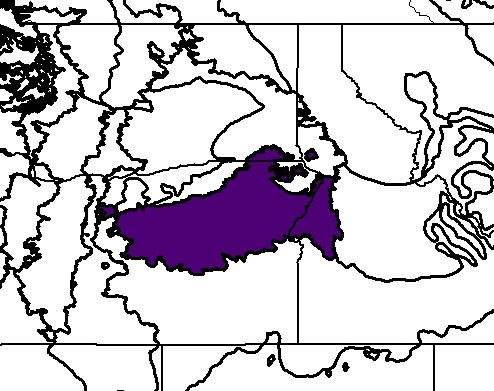
Meadow, from Pumpkin Ridge looking south toward the Grande Ronde Valley, Oregon (c) 2012 Karen Antell
Bioimages home (click on an image to enlarge)
view
this page in its intended navigation context
Blue Mountains forests
(WWF
ecoregion NA0505)

Meadow, from Pumpkin Ridge looking south toward the Grande Ronde
Valley, Oregon
(c) 2012 Karen Antell

Source of bioregions data:
Olson, D. M. and
E. Dinerstein. The Global 200: Priority ecoregions for global conservation. (PDF
file) Annals of the Missouri Botanical Garden 89:125-126.
Distinctiveness (1=highest,4=lowest): 3
(bioregionally outstanding)
Riparian areas are important habitat for fish and for wildlife using them as
corridors. Old-growth forests serve as refugia for many bird species.*
Conservation Status (1=most endangered, 5=most
intact): 3 (vulnerable)
Approximately 10% of habitat remains intact. Fire suppression and logging
has degraded ponderosa pine forests. Overgrazing is a serious threat to
non-forested areas.*
 Artemisia tridentata
(big sagebrush)
Artemisia tridentata
(big sagebrush) Pinus ponderosa
(ponderosa pine)
Pinus ponderosa
(ponderosa pine) Pseudotsuga menziesii (Douglas fir)
Pseudotsuga menziesii (Douglas fir) Larix occidentalis (western larch)
Larix occidentalis (western larch) Pinus contorta
(lodgepole pine)
Pinus contorta
(lodgepole pine)Associated habitats
Mid- to low-elevation mixed conifer forest grading into Palouse Prairie grassland at lower elevations




(left) View from Glass Hill looking north toward La Grande and Mt. Emily,
Oregon, (center left and center right) from Pumpkin Ridge looking south toward
the Grande Ronde Valley, Oregon, (right) Camas meadow, lower slopes of Mt. Emily
north of La Grande, Oregon
(c) 2012
Karen Antell
hires
hires
hires
hires
* Ricketts, T.H., E. Dinerstein, D.M. Olson, C.J. Loucks, et al. (1999) Terrestrial Ecoregions of North America: A Conservation Assessment. World Wildlife Fund - United States and Canada. Island Press, Washington, D.C. pp. 258-260.
Except as noted, images copyright 2002-2011 Steve Baskauf - Terms of use